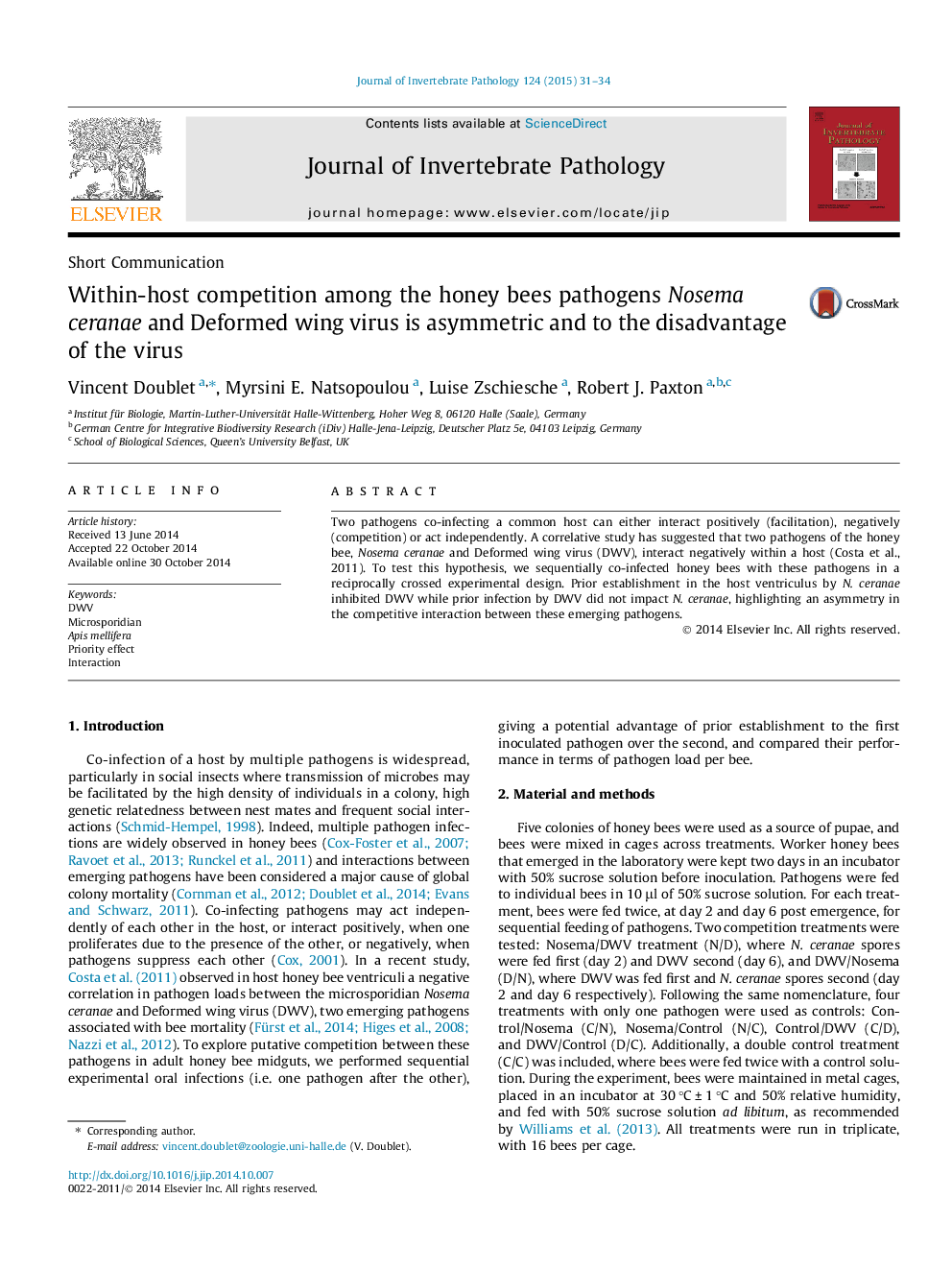| Article ID | Journal | Published Year | Pages | File Type |
|---|---|---|---|---|
| 6389524 | Journal of Invertebrate Pathology | 2015 | 4 Pages |
â¢The emerging pathogens DWV and N. ceranae interact negatively within the ventriculus of honey bees.â¢Sequential (one after the other) feeding of both pathogens reveals an asymmetry in competition.â¢N. ceranae shows a priority effect, inhibiting subsequent DWV infection in the midgut.â¢DWV infection does not influence N. ceranae multiplication.
Two pathogens co-infecting a common host can either interact positively (facilitation), negatively (competition) or act independently. A correlative study has suggested that two pathogens of the honey bee, Nosema ceranae and Deformed wing virus (DWV), interact negatively within a host (Costa et al., 2011). To test this hypothesis, we sequentially co-infected honey bees with these pathogens in a reciprocally crossed experimental design. Prior establishment in the host ventriculus by N. ceranae inhibited DWV while prior infection by DWV did not impact N. ceranae, highlighting an asymmetry in the competitive interaction between these emerging pathogens.
Graphical abstractDownload full-size image
